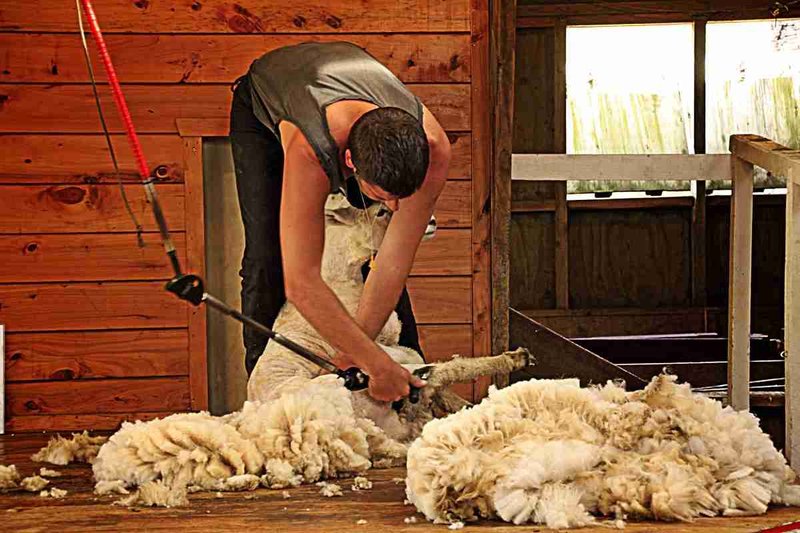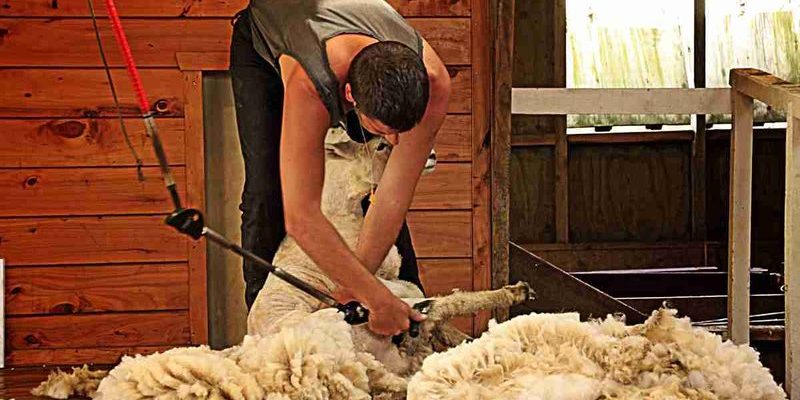
In this guide, we’ll walk through the ins and outs of shearing sheep, focusing on doing it safely and humanely. We’ll cover everything from the right tools to techniques that keep your fluffy friends calm. If you’re thinking about diving into this rewarding task, grab a cup of coffee and let’s get started!
Understanding Sheep Shearing: Why It Matters
You might be wondering why shearing is essential in the first place. Sheep grow wool continuously, and if left unchecked, they can become uncomfortable or even develop health issues. Think of it as trimming your nails or getting a haircut—it’s all part of keeping them healthy and happy. Not only does shearing help prevent overheating in warmer months, but it also reduces the risk of skin diseases and parasites.
Shearing is also beneficial for farmers. Wool is a valuable commodity, and proper shearing ensures high-quality fleece. This means healthier sheep and better wool for sale. It’s a win-win situation! But, of course, it’s crucial to do this process safely and humanely to ensure the sheep are calm and comfortable throughout the process.
Gathering the Right Tools for Shearing
Before you start, you need to gather the proper equipment. It’s a bit like getting ready to cook a meal; having the right tools makes all the difference. Here’s what you’ll need:
- Shearing machine: Electric or manual shears designed specifically for sheep.
- Wool handling gloves: These help you grip the wool without slipping and protect your hands.
- Rugged clothing: Wear something durable, as you might get a bit dirty during the process.
- First-aid kit: Just in case—accidents can happen, so it’s always smart to be prepared.
When choosing your shearing machine, look for one that feels comfortable in your hands. You might want to try a few out to see which brand feels just right for you. If you’re new to this, a good starter option is the Wahl Sheep Shearing Kit. It’s user-friendly and designed for those picking up shearing for the first time.
Preparing the Sheep: The Calm Before the Shearing
Now that you have your tools ready, it’s time to prepare the sheep. This step is crucial because a calm sheep is easier to shear—think of how much easier it is to cut hair when your client is relaxed. Start by placing the sheep in a calm environment, away from loud noises and distractions. You might even want to spend a few moments gently petting them to make them feel more at ease.
Next, check the sheep for any skin issues or injuries. If you spot any, consider postponing the shearing until they get the proper care. Remember, the goal is to ensure the sheep are healthy and happy. If they’re uncomfortable or not feeling well, shearing can become a stressful experience for them.
Step-by-Step Shearing Technique
Shearing can seem daunting at first, but breaking it down into steps makes it manageable. Here’s how to go about it:
1. Position the Sheep: Sit the sheep down on its hindquarters or lay it on its side. This position is often called “the crutch.” Just make sure it’s comfortable and secure.
2. Start at the Belly: Use your shears to start shearing from the belly, moving in the direction of wool growth. The belly wool is usually softer and easier to cut, making it a great starting point.
3. Move to the Flanks and Back: Gradually work your way outwards to the flanks and then up the back. Maintain a steady hand and be gentle—this isn’t a race!
4. Finish with the Head and Legs: Finally, shear the remaining wool from the legs and head. Remember to be especially gentle around the face to avoid startling the sheep.
Throughout the process, keep an eye on the sheep’s body language. If they seem restless or anxious, take a short break to calm them down. Just like us, they can feel stressed, and taking a moment to breathe can make all the difference.
Post-Shearing Care for Sheep
Once you’ve finished shearing the sheep, there are a few important steps to follow to make sure they’re still feeling great. First, check for any nicks or cuts. If you see any injuries, treat them with appropriate antiseptic to keep the sheep clean and healthy.
Next, let the sheep roam a bit. Stretching their legs after the process is a great way to help them relax after a big “haircut.” Make sure they have access to food and water, too. Keeping them well-hydrated is crucial, especially after shearing.
Lastly, consider giving them some extra attention. Sheep are social animals and appreciate a little love and care, whether it’s a gentle pat or just spending some time nearby. This connection helps build trust for future shearings!
Common Challenges and Troubleshooting
Honestly, even seasoned shearers encounter challenges. It’s essential to be prepared for hiccups along the way and understand how to handle them. Here are some common issues you might face:
– Sheep Resistance: If your sheep is squirming, take a moment. It’s okay to stop and soothe them before continuing. Never force the process!
– Blade Issues: If your shears aren’t cutting smoothly, check the blades. Dull blades can pull at the wool and cause discomfort. Keep a spare set handy for quick changes!
– Weather Factors: If it’s too hot or cold, consider postponing shearing. Sheep can be sensitive to temperature changes right after being shorn, so pick a mild day if possible.
It’s all about being patient and learning as you go. If you’re really stuck, don’t hesitate to ask for advice from experienced shearers or even watch online tutorials for helpful tips and techniques.
Shearing sheep can be a rewarding experience when done right. It’s about more than just cutting wool; it’s about building trust with your sheep and ensuring they stay healthy and comfortable. By following these steps, you’ll not only learn how to shear sheep safely and humanely but also foster a deeper connection with these wonderful animals.
Remember, it’s perfectly normal to feel a bit nervous if you’re new to it. Just take your time, be gentle, and soon enough, you’ll find your rhythm. Enjoy the process and celebrate the beautiful wool you’ll be bringing in, knowing you’ve done it with care and compassion!

